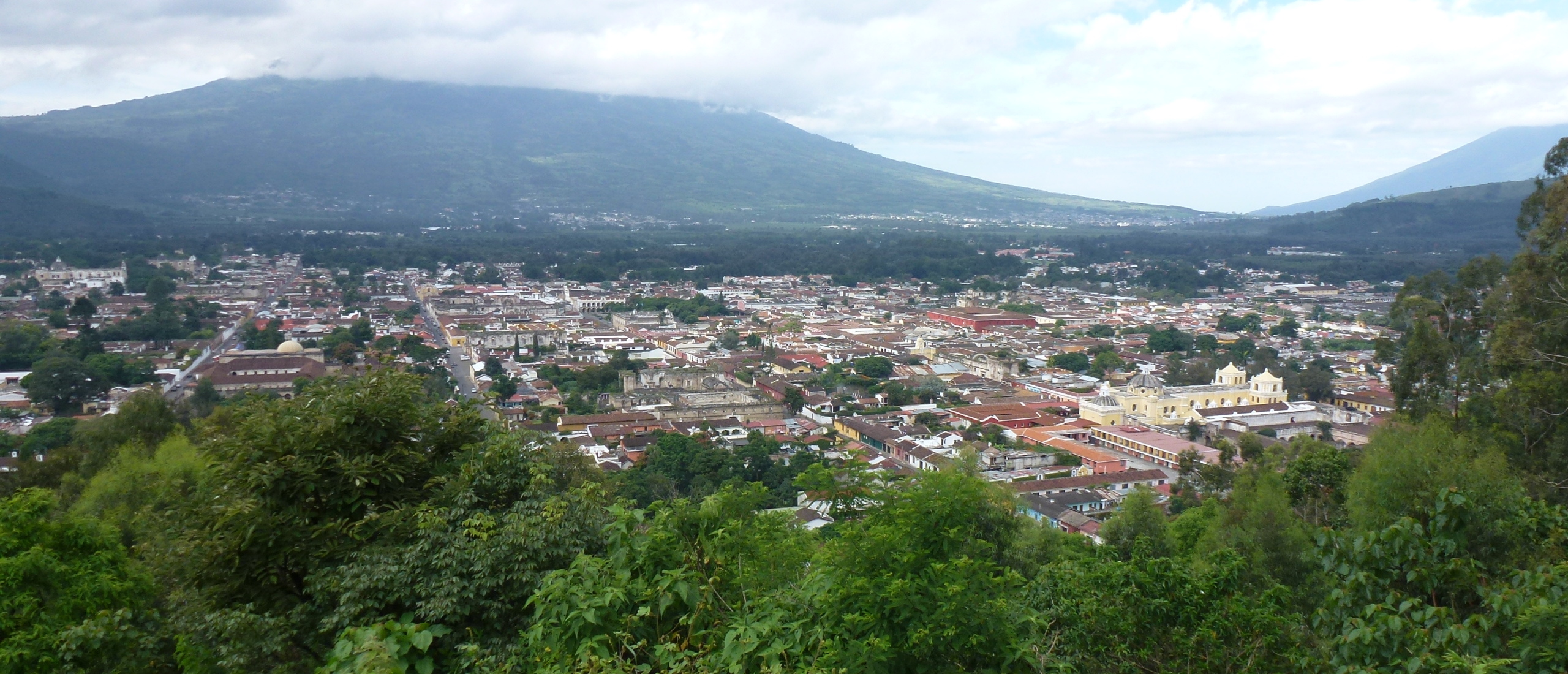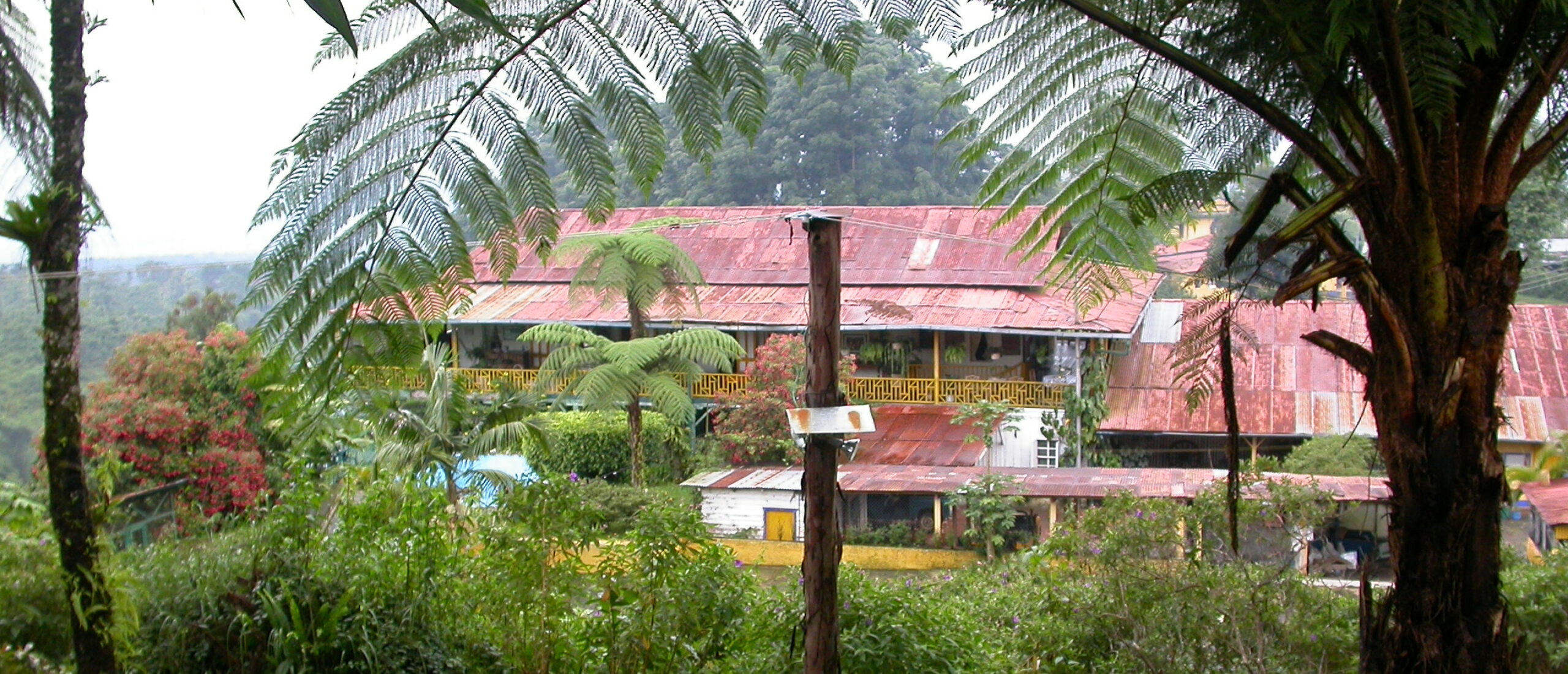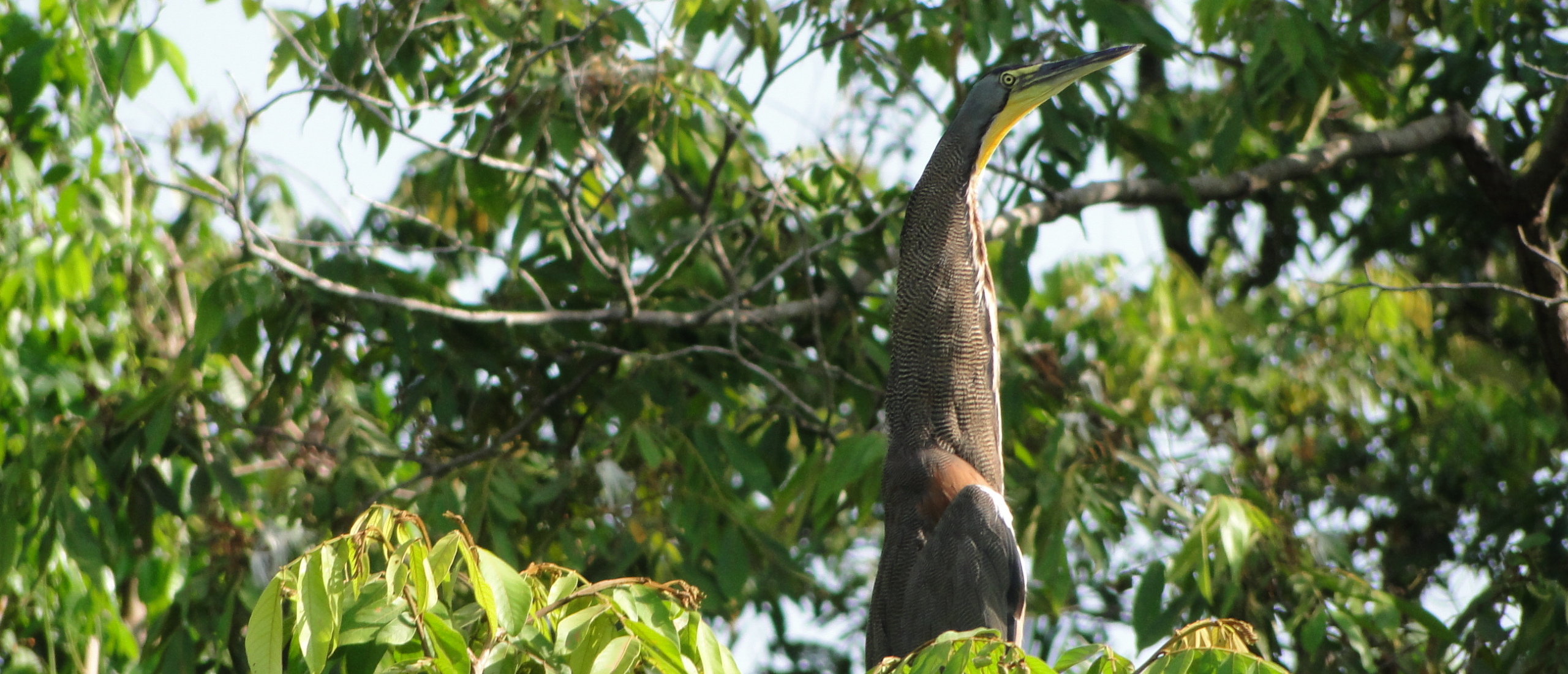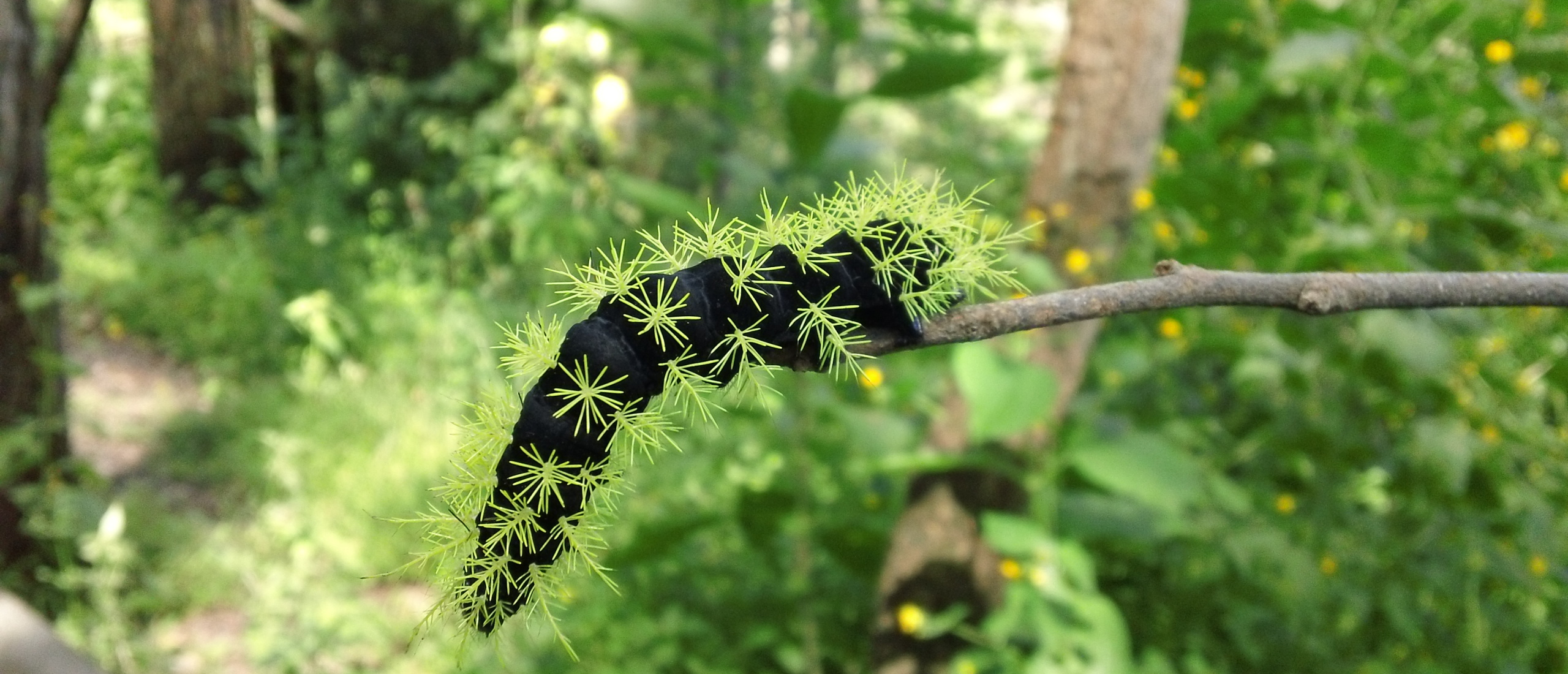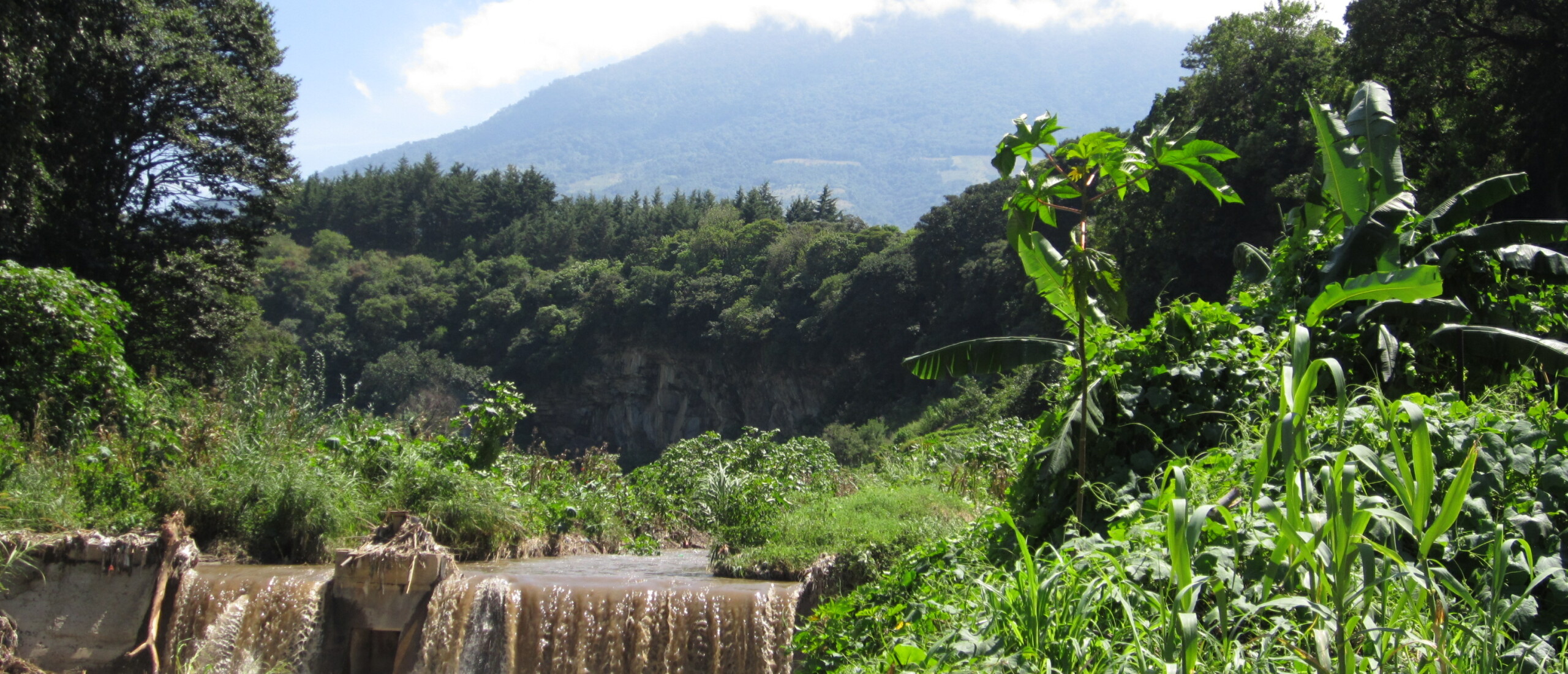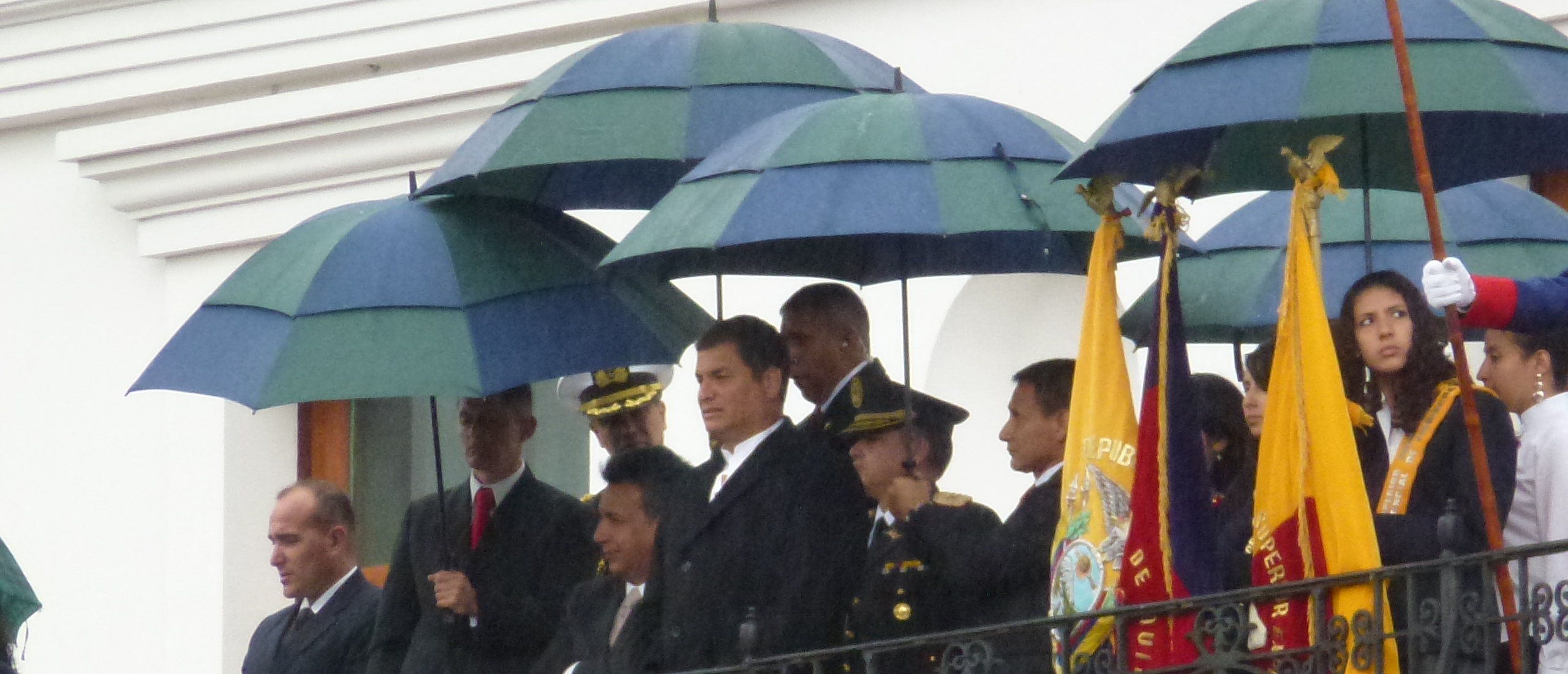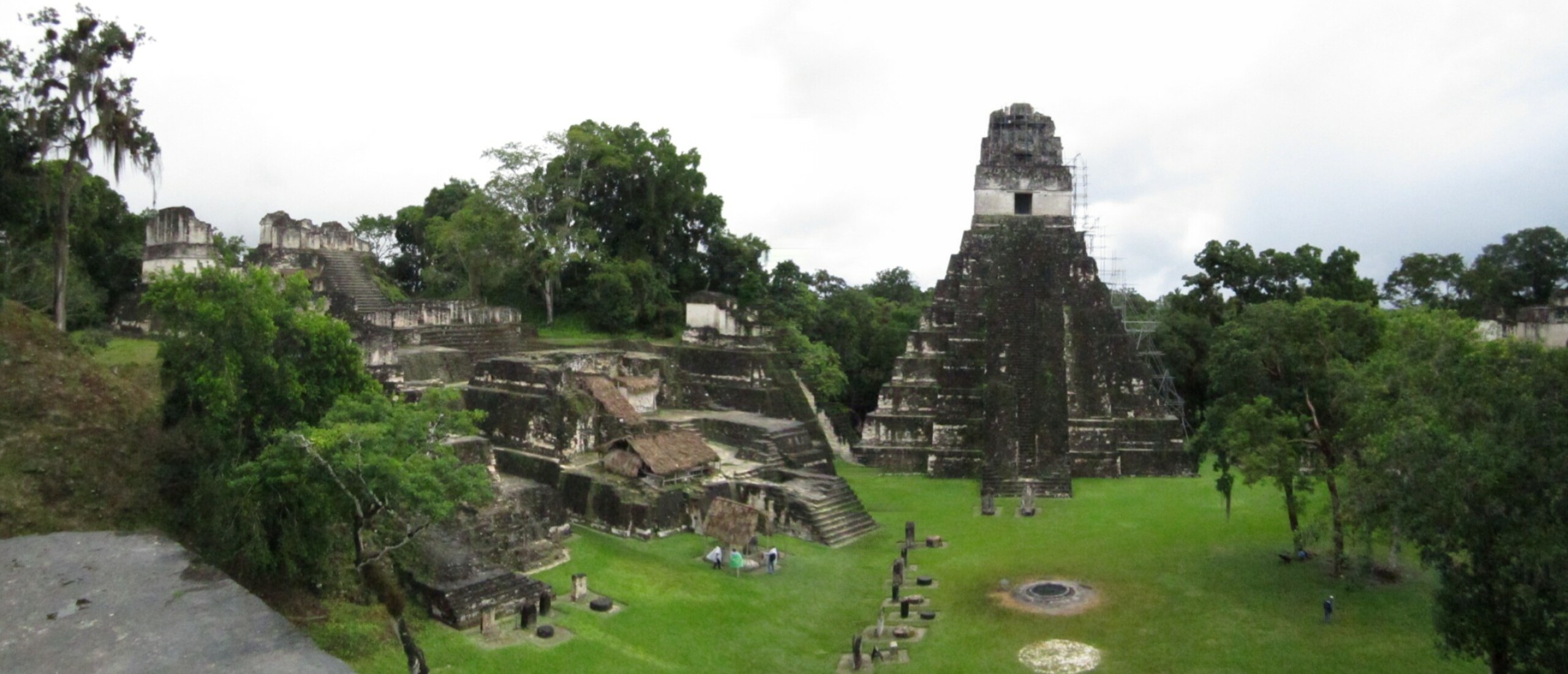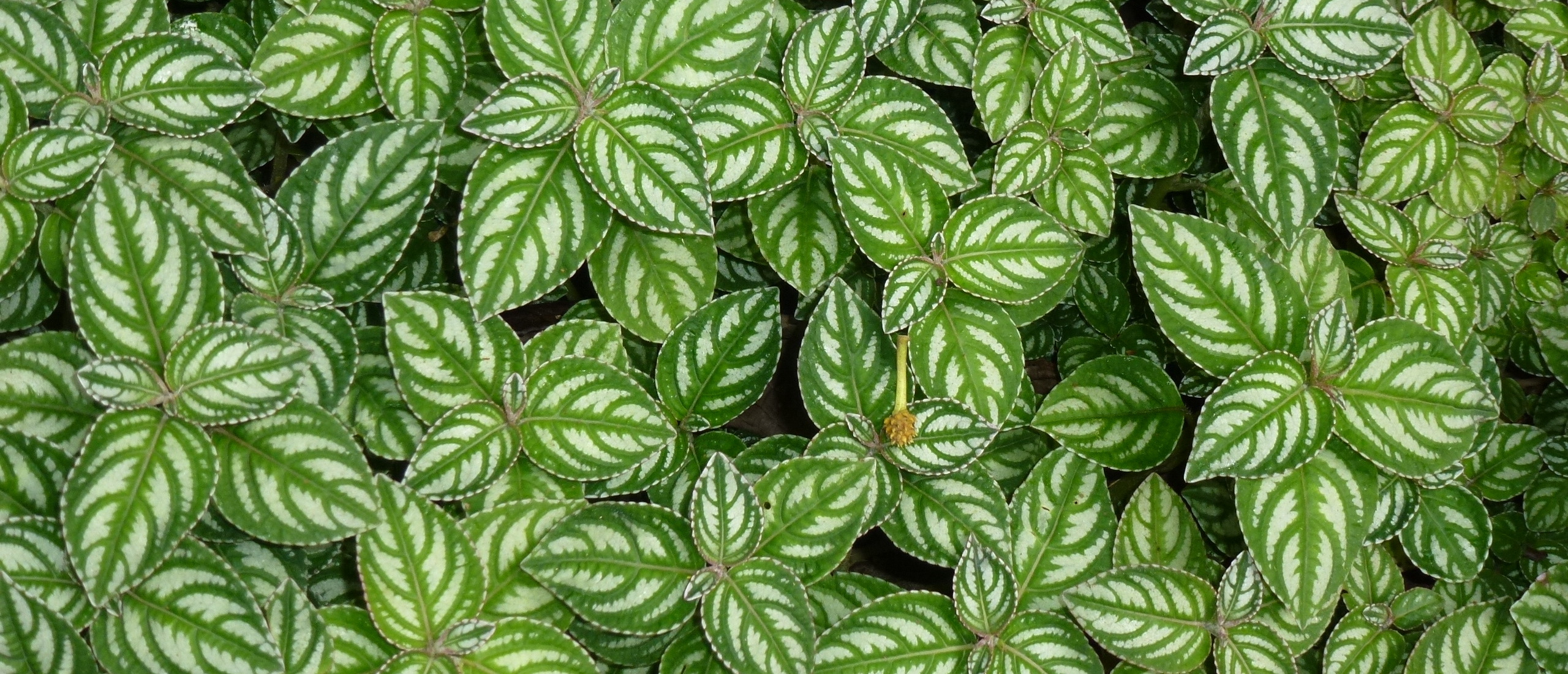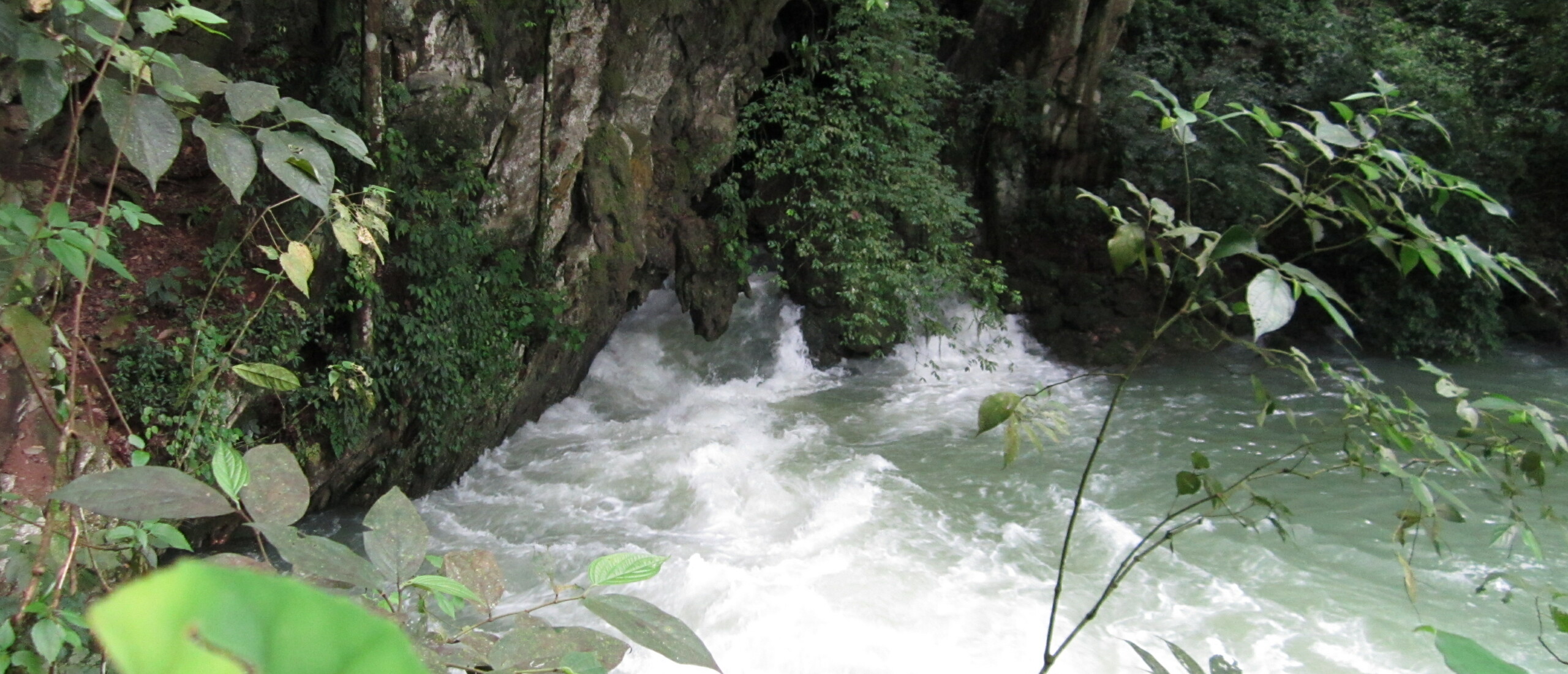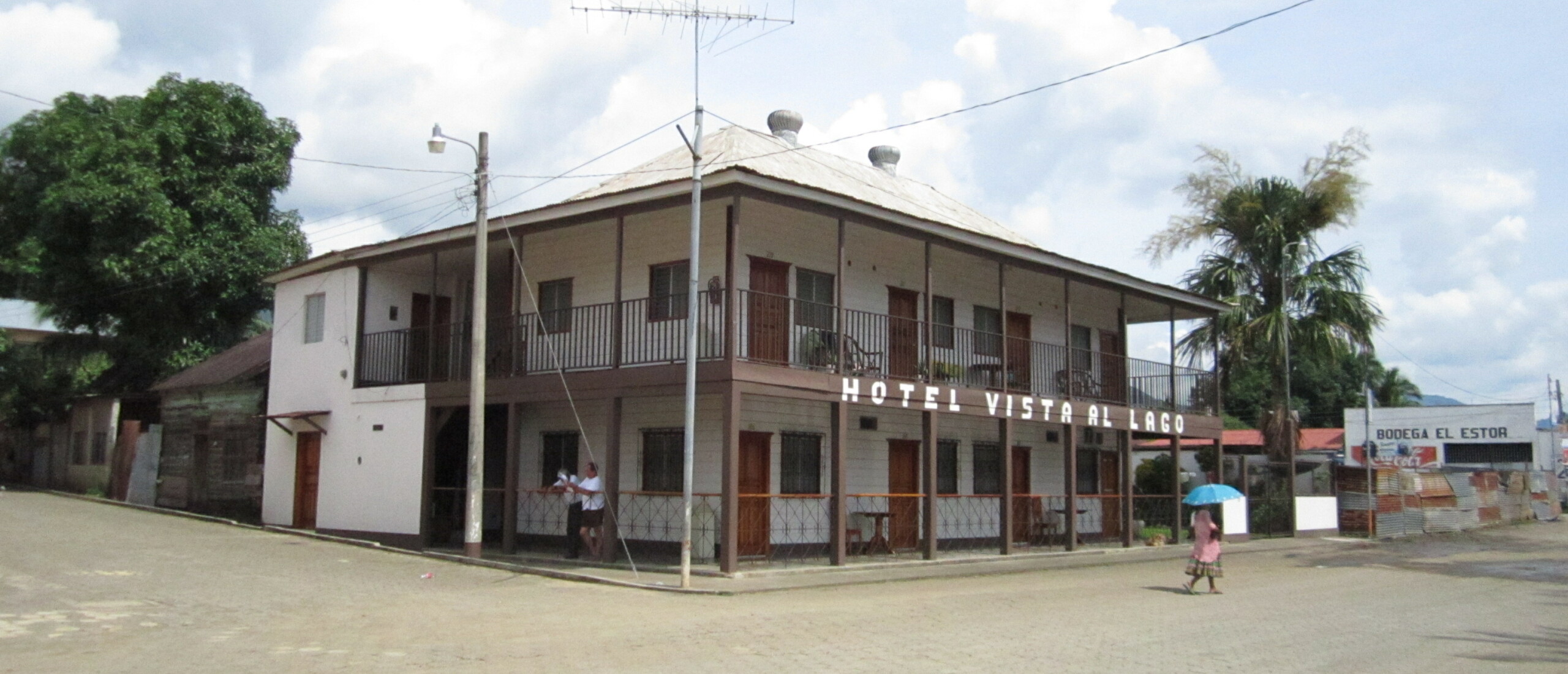
Antigua“Dos cobardes y una aventurera” Following our drenching at Tikal, we returned to our very welcoming but very humid hostel, Mon Ami (finding a dry place during these rains is impossible), and attempted to balance all our soaked items, including Natalia’s passport, numerous banknotes and other vital documents, my butterfly book (which nearly a week later is still wet and the pages have fused together), all on top of a wardrobe, with a large electric fan blowing on them….but then the electricity went!!!
 Natalia and the soaked documents
Natalia and the soaked documents
The following morning we decided to take it easy, and it would have been hard to do anything else – the rain had been pouring down all night, and continued throughout the morning, until finally at about 14.00 it stopped, and there was even a short period of sunshine. Immediately we set off in our minibus along the north shore of the lake, and stopped at various places to watch birds, finally stopping at a mirador, from where I telephoned our boatman, Lou Simonich (tel: 50367923), with whom, if the weather looked promising, we were to do an evening boat tour of the lake and two rivers that run into it. The weather did indeed look good, and the decision was YES, let’s go for it! We at once jumped back into the bus, slightly concerned about the time because a political rally of the Partido Popular was taking place ON the road through the small village of Jobompiché, and the local candidate was speaking to the crowds across the road, completely blocking our progress. We edged our way forwards through the crowd, and at one point it looked as if we would not get through, but finally the crowds parted, and the candidate himself, microphone in hand, motioned us through, shouting to the crowd “¡Aplauso para los turistas!”, and we moved on through the clapping and cheering crowd – almost enough to make one vote for the Partido Popular in the forthcoming presidential election, due to be held on 6th November! Screeching to a halt in front of the hostel at 15.55, we found Lou already waiting for us at the pier just below in his lancha, and we headed out across the lake, looking forward to an evening of bird observation in the two rivers on the south side. At first, all seemed well, but within a short space of time, rain clouds had swept across the lake, and we were utterly drenched again! The rain, coupled with a sudden strong wind that sent waves scudding across the surface of the lake, made further progress impossible, maybe even dangerous, so it was decided that we should abandon the mission, and we ploughed our way back to the jetty, where we disembarked onto the slippery pier, and took refuge under the palm-leaf shelter, watching Lou disappear into the rain on his way back to his side of the lake.
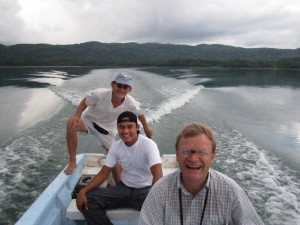 Lou, Marvin and self before the rain struck
Lou, Marvin and self before the rain struck
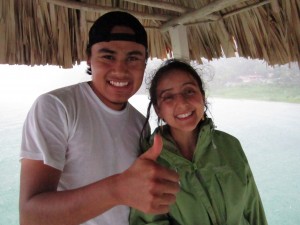 Marvin and Natalia sheltering under the palm-leaf shelter
Marvin and Natalia sheltering under the palm-leaf shelter
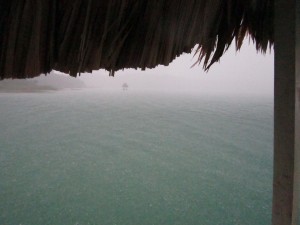 View from the shelter - the rain cascading down
View from the shelter - the rain cascading down
At this point the rain started coming down even harder, and the walk back along the narrow wooden pier looked treacherous, so we were virtually marooned under the shelter. Finally, perhaps twenty minutes later we heard muffled shouts coming apparently from nowhere, and we were amazed to see the gallant Lou, who had moored his boat on the other side of the lake and then come round in his pickup while we were waiting under the shelter, splashing his way along the pier with a large umbrella, ready to rescue us! After a quick “dry”-out (impossible), we sat down to share a bottle of wine, and Lou told us his astonishing life story. An original anti-Vietnam war protesting hippie, and with a truly amazing family lineage in Slovenia, Belgium, Ireland, England, and with a 96-year-old mother who can apparently trace her family back to Roman times, Lou has ended up living on the shores of the Lago Petén Itzá in Guatemala, where he runs bicycle, canoe, birdwatching and crocodile tours and bakes the most delicious bread and cakes! A mine of information, it was easy to chat to Lou for a long long time while the rain sploshed down around the palm-leaf roof that covers the communal restaurant area of the Hostal Mon Ami. Finally, after another very humid night, through which my bites were increasing both in number and viciousness, we had to say goodbye to our delightful hosts, and our special thanks go to Patrick, a Swiss traveller and jewel-maker who has got caught by the charms of Guatemala while on a long trip down through Latin America and was standing in for the French owner of the Hostal, and Nora, the helpful and charming receptionist/manager. Then we were on our way, heading southwards through SUNSHINE, on the long drive down to Rio Dulce, where we joined the road that Jacqueline, Julie and I had travelled along back in August, until we finally arrived at the small town of El Estor, on the shores of the Lago de Izabal.
 Natalia trying to dry her shoes
Natalia trying to dry her shoes
We checked into our historic hotel, the Vista al Lago, which dates back to 1890, and housed the original store, set up by British loggers, and from which the town takes its name: store, pronounced in Spanish, which cannot allow a word to begin with an s followed by a consonant, became estor. 1890 was too late for the town to have been visited by my great grandfather on his visit in 1880, but this hotel, with its colonnaded balcony, gives a nineteenth century feel nonetheless.
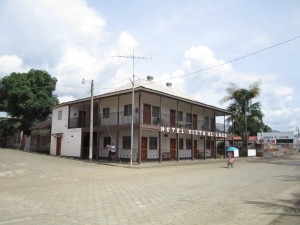 The hotel Vista al Lago, formerly the store, from which the name El Estor derives
The hotel Vista al Lago, formerly the store, from which the name El Estor derives
The temperature in the blazing sun, coupled with the extreme humidity, made it almost imperative for us to seek a place to cool off, and what better place could there be than the cool pools and hot waterfall of El Paraiso, which I had also visited with Jacqueline and Julie on my previous trip to this area? We were the only tourists this time, and the water was much higher and faster flowing than then, and it was here that the subtitle of this blog entry stems from: “Dos cobardes y una aventurera” – “Two cowards and an adventurer”! The two cowards refer to Marvin and myself, both of whom chickened out of crossing the narrow but powerful channel of water sweeping between the rocks, and the adventurer refers to the intrepid Natalia, who forged her way across, swam to beneath the blazing hot waterfall, and then climbed barefoot up the opposite bank, finding footholds on roots, and disappeared over the top of the cliff, where she apparently enjoyed a soak in the hot spring pools high above the falls, out of sight of the two chickens below!
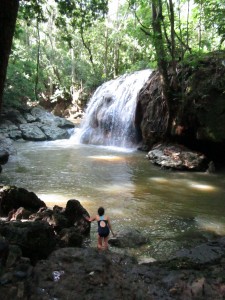 The hot waterfall of El Paraiso
The hot waterfall of El Paraiso
Finally she returned, and we then headed back to the bus, and drove the short distance to the lakeshore section of the Finca El Paraiso, where we were not exactly “welcomed” by a slightly mentally challenged lady sporting an “Ireland” t-shirt, who insisted we should pay 30 Quetzales for the swim which we planned to take in the lake after a birdwatching walk, “ahorita”. This provoked an interesting linguistic misunderstanding: for Guatemalans, ahorita means now, whereas for Natalia, a Colombian, ahorita meant later, or shortly. Finally we did end up paying there and then, and headed off for a walk behind the finca, passing a cage housing two Crested Guans, and more worryingly, two Great Curassows, highly endangered gamebirds that are in heavy decline due to habitat destruction and excessive hunting. We were treated to sightings of a beautiful White-tailed Kite and a pair of Crested Caracaras here, as well as a “concert” of the almost frightening roars of a small troop of Black Howler monkeys. A passing local on his bicycle shouted jokingly to us: “¡Cantan para Guate!” (they sing for Guatemala) – this became a catchphrase of our trip, along with “¡Aplauso para los turistas!”! Marvin and I then waded into the balmy water of the lake, leaving Natalia attempting to photograph toads in the gathering dusk, perhaps very slightly making up for our lack of adventurousness earlier in the afternoon.
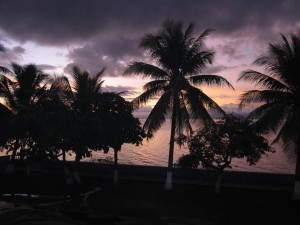 Sunrise view from the Hotel Vista al Lago, El Estor
Sunrise view from the Hotel Vista al Lago, El Estor
The following morning we were up at 05.30 for our boat tour of the wonderful flooded forests and marshes of the Bocas del Polochic, with the very same boatman, Benjamin Castillo, who had taken Jacqueline, Julie and me on our excellent tour the previous time. We took a different route this time, at first running along parallel to the north shore of the rivermouth, and Benjamin pointed out the wooded shore that used, before the construction of the nickel mine, to attract large numbers of tapirs, known in Spanish as dantas, the name that is to this day is given to this shoreline. Interestingly, the small indigenous village that my great grandfather visited here was called Danta. A passage of a letter to his mother of 20th May, 1880, reads: Am only two or three days by water here from the Atlantic Ocean, it is one day to Yzabal and another two days to Livingston. I left La Hamaca on the 12th for Telemán, where I remained till the 18th, then came on here. For the last 3 weeks I have been in places excessively hot, in fact so hot at midday that one is obliged to rest for a few hours, and unless there is rain in the night, which in this place at end of the dry season is usually the case, it gets hotter and hotter till you are almost stifled, then comes a heavy thunder storm with a great deal of sheet lightning, and this cools the air till morning - you cannot sleep. In Telemán, a little Indian village, I could not sleep from mosquitoes; here also the mosquitoes are a plague, though as yet not many indoors. You cannot stir without getting wringing wet with perspiration, my clothes fall to pieces and wear out in no time from this cause, knives, keys, etc. all get very rusty. This place is very little above the level of the sea, not very far from the Lake of Yzabal and at the mouth, so to speak, of the long Polochic Valley; higher up the mountain ranges come in closer, here they are rather distant. This is by far the most tropical country I have yet seen, would like to transport Father here for a short time (though I expect he would soon want to leave for the heat and mosquitoes) to see the palms; the forest is full of them, the long leaves arch over the road, making a pleasant shade, they are like enormous shuttlecocks and are worth a journey to see; here in Panzós, there are a few coconut also. In the forest, there are trees of enormous height, they grow right above all the palms etc. without sending out a single branch, from 60-80 feet, they begin to send out branches; in forest also many acacia trees, on the ground Lycopodiums and sensitive plants. Here you hear howling monkeys (but they always keep out of sight); this, with the chattering of the small parro toucans and other birds, lets you know you are in the Tropics. Panzós is but a small village, but one fares a little better, though it is usually eggs, tortillas, and frijoles for every meal, sometimes a little meat, but meat we should not care for at home, bread; however, a decent bed here, the first for the last five weeks. In these places, ants swarm in the houses, and indeed, everywhere, so that unless people are careful, they get in everything. Have no end of trouble to keep them away from my collection, scorpions also, and many other objectionable creatures. The Tropics are all very well, but unless you can live as the better class live in the West Indies, a little more comfortably, one is far better off in England. The natives here are very fond, especially on Sundays, of doing a little insect collecting in one another’s heads, feet etc. and often when you are eating, if this does not spoil your appetite, I don’t know what will. Our route then took us up the river, and then we turned off into similar narrow channels to those we had explored in the Rio Oscuro back in August, and although there was not a huge amount of birdlife visible, we did manage to find such species as Bare-throated Tiger-Heron, a superbly cooperative Lineated Woodpecker playing hide-and-seek with us the top of a bare tree trunk, Limpkin, Boat-billed Heron, Violaceous Trogon, Ringed and Belted Kingfishers, and a real, original, wild Muscovy Duck, the origin of so many farmyard ducks the World over, but now quite rare in the wild.
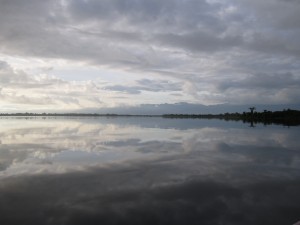 The magical Bocas del Polochic
The magical Bocas del Polochic
We finally re-emerged from the tunnels of vegetation into open water, and we were treated to views of at least two manatees, which came up for air and then dived, showing their amazing rounded tails most cooperatively for us. And so ended another excellent tour with the skilled and informative boatman Benjamin Castillo, highly recommended (tel: 46387379). We packed our things and headed off for the long drive back to Antigua, where I urgently needed to visit an optician to set in train the replacement of my broken glasses. We arrived in the early evening, and so ended our excellent tour. Our special thanks go to Marvin Ordóñez, who drove us impeccably, as well as being a friend to us throughout the trip, and to Maibely Pérez, of Ash Travel (tel: 78326325), for organising the trip and for obtaining a very reasonable rate for us. Yesterday, Natalia and I braved the “chicken bus” (retired US school bus) for the short trip to the Finca Valhalla, a macadamia farm just outside the small town of San Miguel Dueñas, where my great grandfather GCC had based himself several times in 1880. Not only was the tour of this remarkable place, which as well as growing macadamia trees here at this location, also promotes the planting of macadamia trees in indigenous villages across the country as an alternative source of income for local people, highly interesting, but it also enabled us to make the acquaintance of its entertaining founder, Lorenzo Gottschamer, whose highly blue jokes were enough to split any stubborn macadamia nut shell open! I explained the purpose of my mission to Lorenzo, and in particular that I was looking for the mysteriously disappeared Laguna de Dueñas, on the shores of which GCC had lodged in a finca, and he immediately pointed us to a finca across the road from his, on which the remains of the semi-drained lake are to be found!
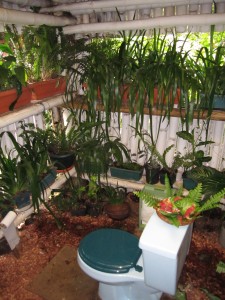 Amazing toilet at Finca Valhalla
Amazing toilet at Finca Valhalla
We immediately headed off on foot towards the entrance, stopping to admire a truly beautiful Scissor-tailed Flycatcher that was perched on a tree stump, opening and closing its spectacular tail streamers as if deliberately showing them off to us. We soon reached the entrance of the finca, but sadly (and yet understandably) the guard was not able to let us in. However, he did tell us about the Laguna, which has apparently been drained since GCC’s day in an attempt to prevent flooding of the surrounding plantations, but which still survives as a wetland. In a further attempt to reach this almost mythical place, we crossed over the swollen river by the main bridge at the entrance of San Miguel Dueñas, and entered the finca just beyond, whose gates were open. Here we asked the gatekeeper for permission to enter, which he granted, but with the warning that we should be EXTREMELY careful due the presence of robbers in this area. As Natalia and I were both carrying a number of valuable optical items and documents, we decided to play it cautious here. Perhaps I will visit this place another time, in the company of a bodyguard and without carrying anything of value!
 Mating pair of Disturbed Tigerwings, Mechanitis polymnia
Mating pair of Disturbed Tigerwings, Mechanitis polymnia
[/caption] Following a final farewell dinner with Luisa, Natalia left on the shuttle bus to the airport at 04.00 this morning, on her way to see her family, whom she has not seen for two years, in Bogotá, and I am now planning to take a few days off from travelling, mainly to sort out my new glasses, and to recuperate from the violent allergic reaction I have developed to my numerous mosquito and/or chigger bites – I have become almost paranoid when I see or hear a mosquito….and there is one buzzing around my ankles under the table in the restaurant where I am writing this now…!



